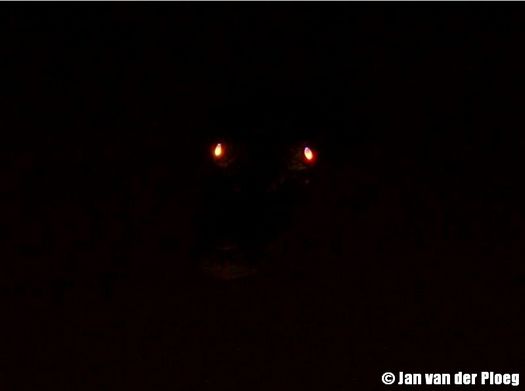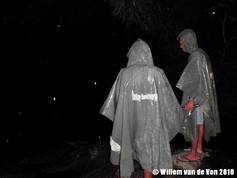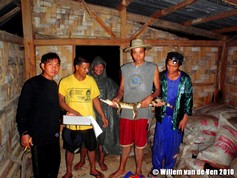After the crocodiles are released back into the wild, of course we want to know how they are doing. We want to know if our strategy is working and the head-start really does give them an advantage. So we do surveys to keep track of them; every three months we go to all the sites and survey the rivers and lakes at night. If you shine a flashlight at a crocodile at night, its eyes will reflect in bright red. I you can see both eyes and you can see the distance between them, you can estimate the size and age-class of the crocodile. In this way we know how many juveniles, sub-adults and adults there are in the area. And, once per year, we try to recapture the juveniles; we measure their growth, see which ones are still alive and if they are looking healthy and gained weight. In our experience the juveniles lose a bit of weight in the first few months while they are still adapting to the wild, but after that they start growing again and getting fatter.
Our research shows that at least 55% survives the first few months in the wild and at least 35% survives the first year. Probably these numbers are higher because we cannot find all the crocodiles after release, some of them we found many kilometers away from the release site, where they colonized new lakes.

If you shine your flashlight at a crocodile at night, you will very clearly see the reflection of the eyes shining brightly red. This is called eyeshine, and many nocturnal animals have it, though in different colors. A cat for example will reflect pale green. However few animals are as clear as a crocodile!

Head-start program
Post-release monitoring activities

Quarterly monitoring surveys are done together with the Bantay Sanktuwaryo, the local protection group which was deputized by the Local Government of San Mariano

Title here
Once a year we try to recapture the previously released head-started crocodiles, to gain a better understanding of their adaptation to wild conditions

 Communication and Education
Communication and Education
 Post release monitoring
Post release monitoring

